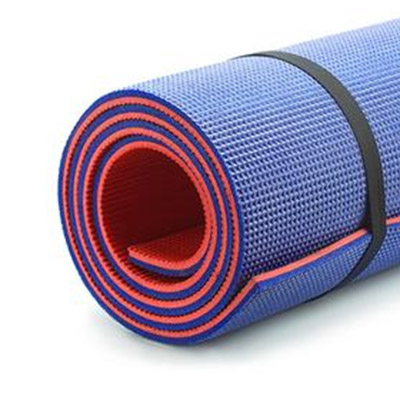
-
 Afrikaans
Afrikaans -
 Arabic
Arabic -
 Belarusian
Belarusian -
 Bengali
Bengali -
 Bulgarian
Bulgarian -
 Croatian
Croatian -
 Czech
Czech -
 Danish
Danish -
 Dutch
Dutch -
 English
English -
 Finnish
Finnish -
 French
French -
 German
German -
 Greek
Greek -
 hawaiian
hawaiian -
 Hebrew
Hebrew -
 Hindi
Hindi -
 Hungarian
Hungarian -
 Indonesian
Indonesian -
 irish
irish -
 Italian
Italian -
 Japanese
Japanese -
 Javanese
Javanese -
 kazakh
kazakh -
 Khmer
Khmer -
 Korean
Korean -
 Kyrgyz
Kyrgyz -
 Lao
Lao -
 Latin
Latin -
 Luxembourgish
Luxembourgish -
 Malay
Malay -
 Myanmar
Myanmar -
 Norwegian
Norwegian -
 Persian
Persian -
 Polish
Polish -
 Portuguese
Portuguese -
 Romanian
Romanian -
 Russian
Russian -
 Serbian
Serbian -
 Slovak
Slovak -
 Somali
Somali -
 Spanish
Spanish -
 Swedish
Swedish -
 Tagalog
Tagalog -
 Thai
Thai -
 Turkish
Turkish -
 Turkmen
Turkmen -
 Ukrainian
Ukrainian -
 Uighur
Uighur -
 Vietnamese
Vietnamese
Dec . 05, 2024 15:45 Back to list
Innovative Mountain Bike Design Concepts for Peak Performance and Durability
Exploring the Art of Mountain Bike Design
Mountain biking is more than just a sport; it’s a lifestyle, a community, and an adventure that thrives on the rugged terrains of nature. At the heart of this exhilarating experience is the mountain bike itself. The design of a mountain bike is a fascinating amalgamation of engineering, art, and user experience, and it plays a significant role in the performance and enjoyment of the ride. This article delves into the intricate world of mountain bike design, exploring key elements that define a quality ride.
Frame Geometry
One of the most critical aspects of mountain bike design is the geometry of the bike frame. This includes factors such as the length of the top tube, the angle of the head tube, and the height of the bottom bracket. Each element contributes to how the bike handles different terrains. A slacker head tube angle provides more stability on downhill trails, while a steeper angle enhances climbing efficiency. Manufacturers often release various frame geometries to cater to specific riding styles, whether it’s cross-country racing, trail riding, or downhill adventures. Riders must consider their personal comfort and the terrains they frequent when selecting a bike frame.
Material Selection
The choice of materials used in mountain bike construction significantly influences performance, weight, and durability. Common materials include aluminum, carbon fiber, steel, and titanium. Aluminum is popular for its lightweight properties and affordability, while carbon fiber is prized for its exceptional strength-to-weight ratio, making it a top choice for high-end models. Steel offers durability and a smooth ride, while titanium combines lightweight and strength but comes at a higher price point. Each material has its unique characteristics, and the selection often depends on the riding style and budget of the cyclist.
Suspension System
mountain bike design

The suspension system of a mountain bike is a vital element that directly affects how the bike absorbs shocks and maintains traction on uneven terrains. There are two main types of suspension hardtail (front suspension only) and full suspension (both front and rear). Hardtail bikes are generally lighter and more efficient on smooth trails, making them suitable for cross-country biking. Conversely, full suspension bikes provide greater comfort and control on rough descents, making them ideal for aggressive trail riding. The design of the suspension, including travel length and damping systems, is crucial for rider safety and overall enjoyment.
Tire Design and Specifications
Tires are another essential component of mountain bike design, as they significantly influence grip, rolling resistance, and overall performance. Mountain bike tires come in various widths and tread patterns, affecting how the bike interacts with diverse surfaces, from mud to rocky paths. Wider tires offer better traction and stability, while narrower tires can roll faster on smooth ground. Tread patterns are designed to optimize performance in specific conditions — for example, knobbly tires excel in muddy situations, while slick tires are better suited for hard-packed trails. The right tire selection enhances maneuverability and rider confidence.
Aesthetics and Customization
Beyond performance, mountain bike design also considers aesthetics and customization. The visual appeal of a bike can greatly influence a rider's connection to it. Manufacturers often offer a range of colors, graphics, and finishes, allowing enthusiasts to express their personality through their bike. Additionally, the rise of the custom bike movement has allowed riders to work with designers to create truly unique setups that reflect their individual riding style and preferences.
Conclusion
Mountain bike design is a sophisticated blend of functionality, engineering, and personal expression. From frame geometry and material selection to suspension systems and tire specifications, each element plays a crucial role in determining how a bike performs and feels on the trails. As technology continues to evolve, so too will the innovations in mountain bike design, ensuring that riders can continue to enjoy thrilling adventures on two wheels. Whether you are a seasoned rider or a newcomer to the sport, understanding these design elements can help you make informed choices that enhance your mountain biking experience. The journey through the wilderness awaits, and a well-designed mountain bike is the perfect companion.
-
Red Black BMX Bike with GPT-4-Turbo AI Tech
NewsJul.31,2025
-
New Red Anti-theft E-Bike | Easy Ride City Commuter
NewsJul.31,2025
-
BMX 20 Inch Bikes for Freestyle & Street | Fat Tire Options Available
NewsJul.30,2025
-
322 High Quality 26 Inch 21 Speed Adult Mountain Bike OEM MTB
NewsJul.29,2025
-
Specialized Kids Mountain Bikes - Safe, Durable & Fun Riding Experience
NewsJul.29,2025
-
Little Kids Mountain Bike - Lightweight Bikes for Young Riders
NewsJul.29,2025

